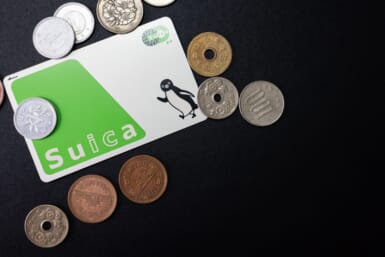I’ve noticed that even people with clean, uncluttered minds tend to become collectors in Japan. I think it’s wholesome. (But what do I know? I’m a collector myself.)
There are several reasons for beginning collections here— folks in the middle of their careers have the extra yen or two to take a plunge at things that family economics precluded until now, It’s also a fact that there are a lot of neat things to get… and build on.
If we were to believe Freud, the impulse to collect is largely sexual. (Alfred Kinsey, before he embarked on his sex research, was a zoologist and collected millions of gall wasps in an attempt to log variations in the species. But that’s obvious. We all know that gall wasp collections ARE sexy.)
Usually collections over here begin with foreigners seeing sumo, and then going nuts over things connected to the sport— ashtrays, teacups, bowls and then paintings and statuettes. I used to call on an English businessman over here, and there was nothing in his office—except him and his desk—that wasn’t a sumo artifact. Friends got together when he left Japan and presented him a mawashi as a sayonara gift. He damned near wore the thing on the plane out of here.
People spot hibachi pots and Sendai chests as being great collectibles because a lot can be done with them in Western decor. One lady of my acquaintance bought 20 chests while she and her husband lived here, then had her husband’s company ship them back to the States when they moved. The company wasn’t happy about that, but she made more the next year selling those chests in Connecticut than her husband did going to work every day.
Sometimes it seems the really neat items were discovered by collectors long ago, and nothing new is still available. To a great extent, that’s true of netsuke, the litde carvings of fat gods, or comical characters, or some such thing that men wore on their belts dating back to the Edo era. The good ones, usually made of ivory, are in the hands of collectors abroad, but I’m told that serious collectors are still turning up new ones as s result of estate sales. What a neat thing to collect.
My wife and I became royalty in the collection of imari plates and bowls. Initially, we acquired the good stuff—250-year-old, four-color crockery of magnificent structure and design. (Having these things increases angst whenever we’re visited by even small earthquakes.)
Lately we’ve been picking up simpler, cheaper imari—usually the blue-and-white kind that is chipped or flawed somewhere— and using it for every-day meals. It is a nice feeling slopping mashed potatoes out of an imari bowl onto a matching plate covered with pork chops or Boston scrod.
I think the citizenry here puts up with collectors. Witness the adulation heaped upon people who walk the old Tokaido road, stopping at all the stations, or the people who go around stopping at every single train station in Japan collecting tickets from each one. Visit all the shrines? Heroes.
I have a friend, Japanese guy, who collects old radios. These are the kind of radios that used vacuum tubes, and his collection is primarily pre-World War II. He’s into it all the way, and corresponds with people all over the world looking to exchange those damn tubes. I once asked him to look for needles for my record players (Victrolas) and he acted as if I had asked a shoemaker for a new hat. He’s a specialist, and although old Victrolas are in the same neighborhood or genre, they are different than old radios.
Do collectors go over the edge? Of course. Who doesn’t go over the edge now and then? But the edge is something we set, not them.
One guy I know has been collecting for years the little plastic strips you get when you unwrap a new package of cigarettes. And he doesn’t just save his own strips. Whenever he sees anyone opening a new pack of cigarettes, he’ll ask for the strip.
What he’s doing is keeping track of the length of these things, about three inches, laid end to end. When I first met him, he had enough to travel to Hokkaido. He now has almost enough to reach Tokyo on the return trip. What, I asked, will happen then? Think of something else to collect, he says. It’s all so… logical. And not over the edge.
Another guy (who shall be nameless, but who appears on the masthead of this newspaper) has saved every packet of promotional tissues handed to him on the streets of Tokyo over the last three decades. Think of that. What a wall of tissue that makes. Over the edge? Not really, or at least not to him.
Which brings us down to this: If anyone out there knows where I can get the kind of steel needles one screws into the tone arm of old Victrolas (which I collect) please contact me in care of the Weekender. Then I will be in a collector’s paradise.









_KRAACH-クリスタルバスソルト-385x257.jpg)